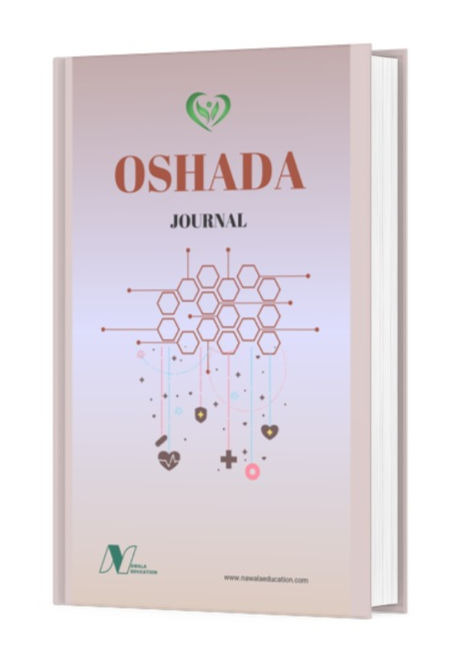Factors causing stunting in pregnant women and its prevention efforts: Public Health Perspectives
DOI:
https://doi.org/10.62872/ac0hf695Keywords:
Stunting, pregnant women, maternal nutrition, healthcare access, prevention efforts, public health.Abstract
This study aims to identify the factors causing stunting in pregnant women and the preventive efforts made from a public health perspective. Stunting in infants is a significant health issue in Indonesia, with its causes often related to maternal nutrition, health status, and access to healthcare services. The research employs a quantitative method with a cross-sectional survey design. Data was collected through questionnaires distributed to 180 pregnant women registered at community health centers and hospitals. Descriptive and inferential statistical analysis was used to identify the relationship between the causes of stunting and prevention efforts. The results indicate that factors such as poor nutritional status, very young or very old maternal age, and limited access to adequate healthcare significantly contribute to infant stunting. Furthermore, health education programs and the provision of additional food supplements positively impacted the prevention of stunting. This study suggests the need for enhanced prevention efforts through broader education on the importance of maternal nutrition and better access to quality healthcare services to reduce the prevalence of stunting in Indonesia.
Downloads
References
Aguayo, V. M., & Menon, P. (2016). Stop stunting: improving child feeding, women's nutrition and household sanitation in South Asia. Maternal & child nutrition, 12, 3-11.
Angellina, S., Handayani, L., Pabidang, S., & Suryantara, B. (2024). Factors Affecting COVID-19 Vaccination In Pregnant Women at The Padang Tikar Health Center. Oshada, 1(3), 52-67.
Aramico, B., Huriyati, E., & Dewi, F. S. T. (2024). Cultural Perception And Myths Of Maternal And Infant Health Related To Stunting In Aceh Tengah Regency, Indonesia And The Opportunity For Intervention. Malaysian Journal of Public Health Medicine, 24(2), 284-292.
Fajar, N. A., Zulkarnain, M., Taqwa, R., Sulaningsi, K., Ananingsih, E. S., Rachmayanti, R. D., & Sin, S. C. (2024). Family Roles and Support in Preventing Stunting: A Systematic Review.
Fristiwi, P., Nugraheni, S. A., & Kartini, A. (2023). The Effectiveness of Stunting Prevention Programs in Indonesia: A Systematic Review. Jurnal Penelitian Pendidikan IPA, 9(12), 1262-1273.
Goudet, S. M., Faiz, S., Bogin, B. A., & Griffiths, P. L. (2011). Pregnant women's and community health workers' perceptions of root causes of malnutrition among infants and young children in the slums of Dhaka, Bangladesh. American journal of public health, 101(7), 1225-1233.
Hadi, N. I. (2023). Challenges and Opportunities of Collaborative Governance in Addressing Stunting: Lessons from Papua. KnE Social Sciences, 857-866.
Kwami, C. S., Godfrey, S., Gavilan, H., Lakhanpaul, M., & Parikh, P. (2019). Water, sanitation, and hygiene: linkages with stunting in rural Ethiopia. International journal of environmental research and public health, 16(20), 3793.
Raiten, D. J., & Bremer, A. A. (2020). Exploring the nutritional ecology of stunting: new approaches to an old problem. Nutrients, 12(2), 371.
Simbolon, D., Riastuti, F., & Suryani, D. (2021). Is there a Relationship Between Pregnant Women’s Characteristics and Stunting Incidence In Indonesia?.
Stewart, C. P., Iannotti, L., Dewey, K. G., Michaelsen, K. F., & Onyango, A. W. (2013). Contextualising complementary feeding in a broader framework for stunting prevention. Maternal & child nutrition, 9, 27-45.
Subramanian, S. V., Mejía‐Guevara, I., & Krishna, A. (2016). Rethinking policy perspectives on childhood stunting: time to formulate a structural and multifactorial strategy. Maternal & child nutrition, 12, 219-236.
Sukamto, I. S., Hartono, R. S., & Mulyani, S. (2021). Community health center worker perspectives on stunting risk factors and challenge of stunting prevention program: A qualitative study. Community Health, 44(05).
Suryana, E. A., & Azis, M. (2023). The potential of economic loss due to stunting in indonesia. Jurnal Ekonomi Kesehatan Indonesia, 8(1), 52-65.
Suryani, D., Yosephin, B., & Angraini, W. (2018). Policy and Determinant Analysis in Effort to Control Stunting Case in Bengkulu Province. Indian Journal of Public Health Research & Development, 9(10).
Suyanto, S., Wahyuni, S., Zulharman, Z., Restila, R., Irfansya, R., Aprillianty, E. N., & Adraf, N. W. (2024). Understanding stunting risk factors in Kampar Regency: Insights from mothers with stunted children (qualitative study). SAGE Open Medicine, 12, 20503121241244662.
Triansyah, I., Amril, S. P., Heppy, F., Vani, A. T., Dewi, N. P., & Abdullah, D. (2024). Chances of Presbycusis in Minangkabau Elderly Patients with Type 2 Diabetes Mellitus Without Complications in Padang City. Oshada, 1(3), 18-29.
Uauy, R., Kain, J., & Corvalan, C. (2011). How can the Developmental Origins of Health and Disease (DOHaD) hypothesis contribute to improving health in developing countries?. The American journal of clinical nutrition, 94, S1759-S1764.
Wirth, J. P., Rohner, F., Petry, N., Onyango, A. W., Matji, J., Bailes, A., ... & Woodruff, B. A. (2017). Assessment of the WHO Stunting Framework using Ethiopia as a case study. Maternal & child nutrition, 13(2), e12310.
World Health Organization. (2018). Reducing stunting in children: equity considerations for achieving the Global Nutrition Targets 2025.
Downloads
Published
Issue
Section
License
Copyright (c) 2024 Yumi Abimulyani, Yuliana Yacinta Kainde , Mardho Tillah Minggele (Author)

This work is licensed under a Creative Commons Attribution-ShareAlike 4.0 International License.

This work is licensed under a Creative Commons Attribution-ShareAlike 4.0 International License.











